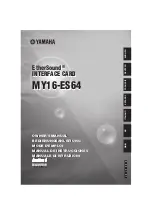
1/27/15
SigC667x / SigC641x User Guide, Rev B7
Copyright
Signalogic 2012-2014
62 / 109
Channel format can be:
N
or
iN
where N is a channel number from 0 to 127 and ‘i’ specifies an IP channel (default with no
prefix specified is a TDM channel). For an IP channel, no endpoint or T1 stream information
should be entered.
Endpoint format can be:
eNtM
where ‘e’ indicates an “endpoint” (time-slot on a T1 stream, from 1 to 24), ‘t’ indicates call leg
source is T1, and M is a T1 stream number from 1 to 28. For example, an explicit entry of:
c.e1t1.e1.t2
would set up a call between endpoint 1 on T1 stream #1 and endpoint 1 on T1 stream #2.
If a target CPU number is not specified, then the “currently active” DSP is assumed. Normally
this is zero (first target CPU).
Note that partial entry is allowed for call and call leg input. For example, when creating calls, if
no endpoint information is given, then the first available endpoint is assigned. If no channel is
specified then the first available channel is assigned. If no call leg source information is given,
then the first available T1 is assumed.
Call legs may be added to an existing call by specifying an existing Call Id. Given the above
examples, the following commands would add a third leg to Call Ids 3 and 4:
c3.9.e21
add a leg to conference Call Id 3, assigned to channel 9 and
endpoint 21 (on T1 stream #1).
p4.27.e1t2 add a listener leg to PTT Call Id 4, assigned to channel 27 and
endpoint 1 on T1 stream #2
With the above information as a guide, use the ‘s’ key to set up the following five (6) calls:
c.0.1
c.e3.e4
c.e9.e10
c.6.7
c5.8.e8
c10.20.e20
c10.21.e21
















































